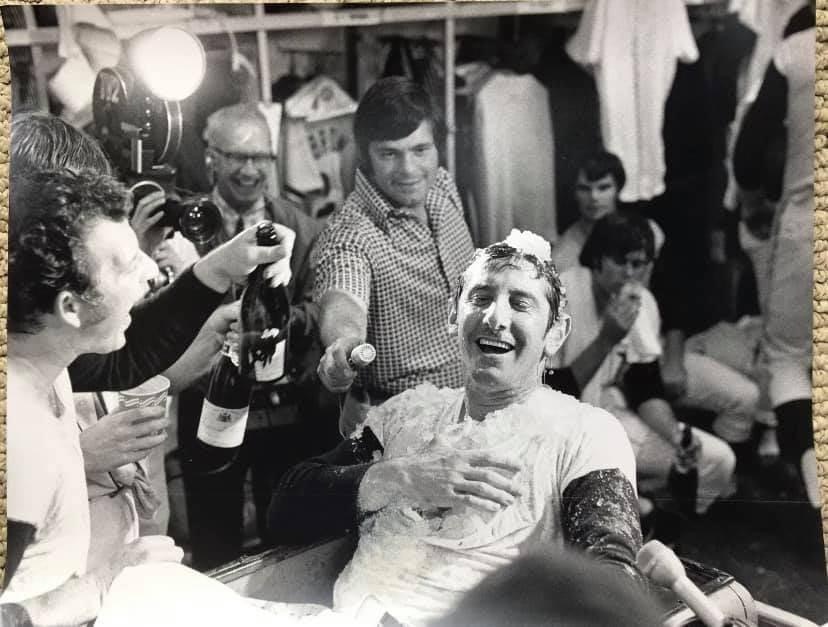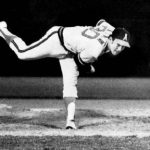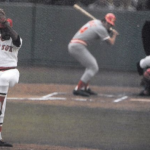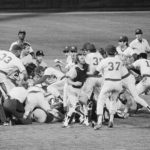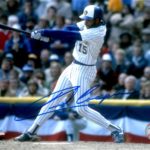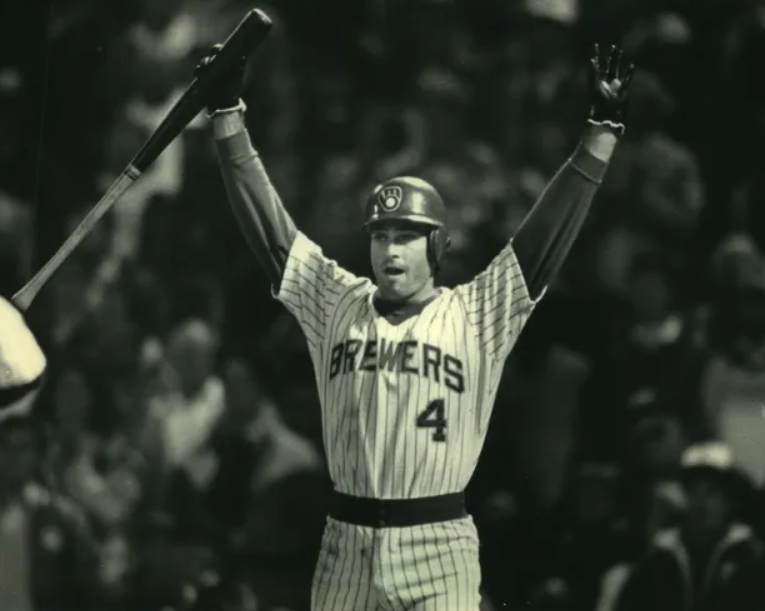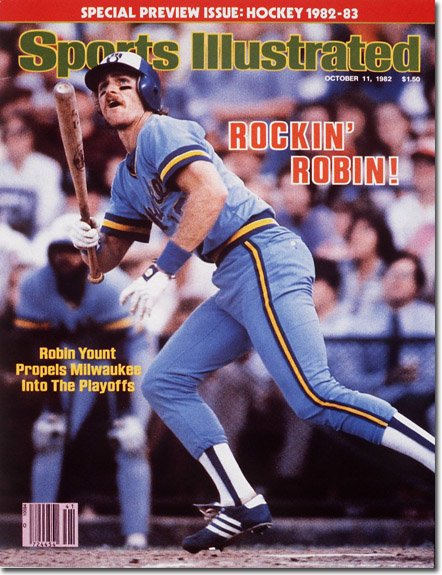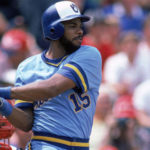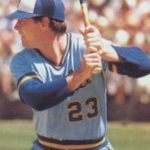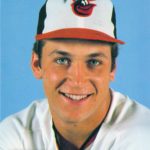Cecil Cooper Stats & Facts
VINTAGE BASEBALL MEMORABILIA
Cecil Cooper
Positions: Firstbase/DH
Bats: Left Throws: Left
Height: 6-2 Weight: 165
Born: Tuesday, December 20, 1949 in Brenham, TX USA
Draft: Drafted by the Boston Red Sox in the 6th round of the 1968 MLB June Amateur Draft from Brenham HS (Brenham, TX).
High School: Brenham HS (Brenham, TX)
School: Prairie View A&M University (Prairie View, TX)
Debut: September 8, 1971 (10,793rd in MLB history)
vs. NYY 1 AB, 0 H, 0 HR, 0 RBI, 0 SB
Last Game: July 12, 1987
vs. OAK 3 AB, 0 H, 0 HR, 0 RBI, 0 SB
Full Name: Cecil Celester Cooper
View Player Bio from the SABR BioProject
Nine Players Who Debuted in 1971
Chris Speier
Chris Chambliss
Ron Cey
George Hendrick
Dave Kingman
Jon Matlack
Doyle Alexander
Cecil Cooper
Darrell Porter
Notable Events and Chronology for Cecil Cooper Career
One of the most underrated players of his era, Cecil Cooper spent much of his career being overshadowed by some of the best players in baseball. The first baseman developed into a star in Milwaukee after being traded by the Red Sox to the Brewers in 1977. Yet he often found himself being overlooked in favor of Rod Carew his first few years in Milwaukee, before receiving less notoriety than other elite first basemen such as Eddie Murray and Don Mattingly in subsequent seasons. Cooper hit 32 home runs, knocked in 121 runs, and batted .313 for the pennant-winning Brewers in 1982. He followed that up by hitting 30 round-trippers, driving in a league-leading 126 runs, and batting .307 in 1983. Cooper finished fifth in the American League MVP voting both years, three places behind Baltimore’s Murray, who placed second in the balloting both times. Cooper even found himself standing in someone else’s shadow in arguably his greatest season, 1980, when he hit 25 homers, led the league with 122 runs batted in, and compiled a career-high 219 hits and .352 batting average. Unfortunately for Cooper, George Brett batted a league-leading .390 for Kansas City that year, en route to capturing A.L. MVP honors. In the end, though, Cooper established himself as one of baseball’s finest hitters over the course of his career, and as one of the game’s premier first basemen.
Early career
Born in Brenham, Texas on December 20, 1949, Cecil Celester Cooper attended Brenham High School, before being selected by the Boston Red Sox in the sixth round of the 1968 amateur draft. Entering Boston’s farm system at the age of 18, Cooper gave early indications that he had a bright future ahead of him by hitting .452 in 84 at-bats with the Jamestown Falcons of the New York-Penn League. The left-handed-hitting first baseman continued to excel against every level of minor league pitching until finally being called up by Boston in early September of 1971. Cooper posted a .310 batting average with the Red Sox over the season’s final month, appearing in 14 games and knocking in the first three runs of his major league career.
Returned to the minors at the start of the 1972 campaign, Cooper finished second in the International League in batting with a mark of .315. Apparently ready to try his luck against major league pitching, Cooper received his big break when the Red Sox included veteran starting first baseman George Scott in a huge 10-player trade with Milwaukee that netted them speedy centerfielder Tommy Harper in return. Still, it took Cooper a considerable amount of time to break into Boston’s starting lineup. After spending most of 1972 and 1973 in the minor leagues, the 24-year-old first baseman joined the Red Sox for good at the start of the 1974 season.
Red Sox years
With Carl Yastrzemski playing a significant number of games at first base for Boston, Cooper spent his first full year in the majors splitting time between first base and the DH spot. He finished the year with eight home runs, 43 runs batted in, and a .275 batting average, in slightly over 400 official at-bats. Although he continued to assume a part-time role with the team in 1975, Cooper improved his numbers to 14 homers, 44 RBIs, and a .311 batting average for the pennant-winning Red Sox. He then batted .400 against Oakland in the ALCS, before posting a mark of just .053 against Cincinnati in the World Series.
Cooper received a greater amount of playing time in 1976, enabling him to increase his offensive production to 15 home runs and 78 runs batted in. However, his career didn’t really take off until the Red Sox traded him to the Milwaukee Brewers at the end of the year for two players who earlier donned a Boston uniform – Bernie Carbo and George Scott.
Rise to stardom in Milwaukee
The Milwaukee team that Cooper joined in 1977 had neither the experience nor the history of success possessed by the Boston squad for which he previously played. But the Brewer organization had several young and talented players that grew up together over the course of the next few seasons. Shortstop Robin Yount, just 21 years old at the time, already had several years of major league experience under his belt by the time Cooper arrived in Milwaukee. Slugging centerfielder Gorman Thomas had been with the team since 1973. Paul Molitor joined the Brewers as a rookie in 1978, the same year that hard-hitting outfielder Ben Oglivie came over from Detroit.
As the Brewer players began to come together as a team, Cooper gradually established himself as one of the American League’s top batsmen. After hitting 20 home runs, driving in 78 runs, and batting .300 in his first year as a full-time player in 1977, he missed a significant amount of playing time due to injuries the following season. Yet, he still managed to bat .312, reaching the .300-mark for the second of seven straight times. Healthy again in 1979, Cooper blossomed into a true star. The first baseman hit 24 homers, knocked in 106 runs, batted .308, and led the league with 44 doubles, en route to earning the first of five All-Star selections. He also won his first of two straight Gold Gloves for his outstanding defense at first base.
Despite being overshadowed by George Brett in 1980, Cooper had perhaps his finest all-around year. In addition to establishing career highs with 219 hits, a .352 batting average, and a .387 on-base percentage, Cooper hit 25 home runs, scored 96 runs, and led the American League with 122 runs batted in and 335 total bases. He also stole 17 bases and struck out only 42 times in 678 total plate appearances, earning in the process a fifth-place finish in the A.L. MVP voting.
Adopting a batting style similar to that of Rod Carew, Cooper generally employed an open batting stance, holding the bat loosely a foot or so from his chest as he awaited the opposing pitcher’s offering. However, Cooper tended to experiment a great deal with his stance, adjusting it based on the opposing pitcher and the game situation. Speaking of his first baseman’s ability to alter his approach at home plate, Milwaukee manager Harvey Kuenn once suggested, “Coop has as many batting stances as times at bat.”
Kuenn’s Brewers became an offensive powerhouse during the early 1980s, eventually earning the nickname “Harvey’s Wall-bangers.” Cooper established himself during that period as the team’s best hitter, consistently finishing among the league leaders in numerous offensive categories. After his brilliant 1980 campaign, Cooper posted solid numbers again during the strike-shortened 1981 season, batting .320 and leading the league with 35 doubles. He then had two of his best years in 1982 and 1983, surpassing 30 home runs, 120 runs batted in, 100 runs scored, and 200 hits both seasons, while also batting well over .300. However, after leading the American League with 126 RBIs in 1983, Cooper’s offensive production began to fall off considerably the following year. The 34-year-old first baseman knocked in only 67 runs in 1984, while batting just .275 -his lowest mark in 10 years. Although Cooper rebounded somewhat the following season, batting .293 and driving in 99 runs, his days as one of the junior circuit’s top hitters had come to an end. Cooper spent two more years in Milwaukee, ending his career as a part-time player in 1987. He retired at season’s end with 241 career home runs, 1,125 runs batted in, 1,012 runs scored, 2,192 hits, and a .298 batting average. Cooper topped 20 homers five times, 100 runs batted in four times, 100 runs scored twice, 200 hits three times, and 30 doubles seven times. He batted over .300 on eight separate occasions, finishing among the league’s top five hitters three times. Cooper led the A.L. in runs batted in and doubles two times each, and he also topped the circuit in total bases once. In addition to appearing in five All-Star games, he placed in the top 10 in the league MVP balloting four different times.
Post-playing career
After retiring from the game, Cooper spent several years working as a players’ agent, before serving as Milwaukee’s Farm Director from 1997 to 1999. He later became a Brewers coach in 2002, followed by a two-year stint as manager of the Triple-A Indianapolis Indians. Cooper returned to the major league coaching ranks in 2005 as a bench coach for the Houston Astros under Phil Garner, whom he knew from the latter’s days as a player and manager with the Brewers. Cooper was named the interim manager of the Astros on August 27, 2007 following the firing of Garner, making him the first African American field manager in Astros’ history. Cooper later had his interim tag dropped, becoming in the process the 16th manager in the history of the Houston franchise. Cooper remained Houston’s skipper until September 21, 2009, when the team’s front office relieved him of his duties.
@ET-DC@eyJkeW5hbWljIjp0cnVlLCJjb250ZW50IjoicG9zdF90YWdzIiwic2V0dGluZ3MiOnsiYmVmb3JlIjoiTGVhcm4gTW9yZSBhYm91dCB0aGUgdGVhbXMsIHBsYXllcnMsIGJhbGwgcGFya3MgYW5kIGV2ZW50cyB0aGF0IGhhcHBlbmVkIG9uIHRoaXMgZGF0ZSBpbiBoaXN0b3J5IC0gLSAtIC0gLSAtIC0gIiwiYWZ0ZXIiOiIiLCJsaW5rX3RvX3Rlcm1fcGFnZSI6Im9uIiwic2VwYXJhdG9yIjoiIHwgIiwiY2F0ZWdvcnlfdHlwZSI6InBvc3RfdGFnIn19@
Best Season, 1980
Had it not been for George Brett, Cooper would have easily won the batting title and probably been better recognized for a super season. He hit .352 (well below Brett’s .390), good for second in the league, and led the loop in RBI and total bases. He also garnered a Gold Glove Award for his play at first base.
Awards and Honors
1979 AL Gold Glove
1980 AL Gold Glove
Post-Season Appearances
1975 American League Championship Series
1975 World Series
1981 American League Division Playoffs
1982 American League Championship Series
1982 World Series
Hitting Streaks
22 games (1980)
22 games (1980)
16 games (1979)
16 games (1980)
16 games (1979)
16 games (1980)
15 games (1980)
15 games (1980)
Players Who Hit Three Homers in One Game, and Last Homer was a Game-Ender
05/30/1958: Walt Moryn, Cubs
06/26/1958: Hector Lopez, A’s
04/21/1959: Don Demeter, Dodgers
07/27/1979: Cecil Cooper, Brewers
05/04/1980: Otto Velez, Jays
07/31/1991: Jack Clark, Red Sox
04/15/2001: Todd Hollandsworth, Rockies
04/16/2006: Albert Pujols, Cardinals
Quotes About Cooper
“He’s one of the finest gentlemen I’ve ever known. I loved having him as a player.” — Bud Selig, on Cecil Cooper
All-Star Selections
1979 AL
1980 AL
1982 AL
1983 AL
1985 AL
Replaced
George Scott
Replaced By
Greg Brock
Best Strength as a Player
Hitting
Largest Weakness as a Player
Speed
Other Resources & Links


